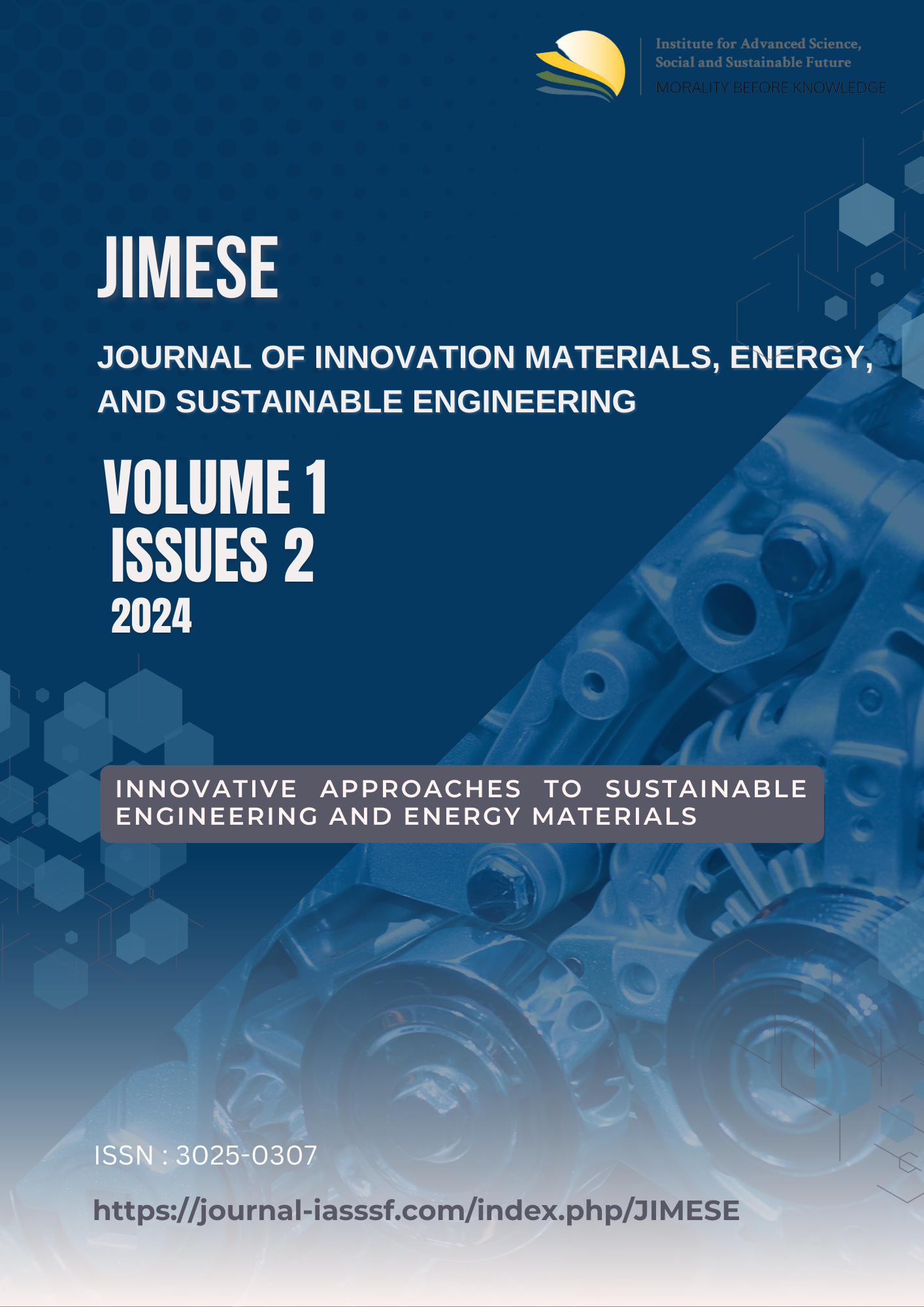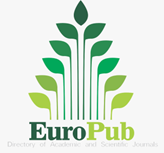Energi listrik berkelanjutan: Potensi dan tantangan penyediaan energi listrik di Indonesia
DOI:
https://doi.org/10.61511/jimese.v1i2.2024.544Keywords:
electricity, challenge, potency, renewable energy, sustainable energyAbstract
Economic growth and increasing population density have an influence on the large need for electrical energy in Indonesia. The amount of energy needed is directly proportional to economic growth and population density. This condition could threaten energy security in Indonesia if all stakeholders still depend on non-renewable energy. Coal, oil, and natural gas, which are continuously exploited for generating electricity, will eventually run out and will no longer be able to meet Indonesia's electrical energy needs. Apart from that, the use of non-renewable energy also has a negative impact on the environment. Indonesia is a country that is rich in renewable energy sources that can be used as a source of energy for generating electricity, but there are still obstacles in processing and using them, so they are not optimal. This paper aims to analyze the potential and challenges of providing electrical energy in Indonesia. The method used is a descriptive method using primary and secondary data and literature studies. The results of this study show that the potential for renewable energy that can be processed and developed for electricity generation is quite large, namely from energy sources originating from geothermal, hydropower, mini-hydro and micro-hydro, bioenergy, solar power, wind energy, and ocean waves. The survey results show that 52% of the public agree with the use of renewable energy, and 43% agree with the use of nuclear energy as a source of renewable electrical energy. The reason for choosing nuclear energy is the reliability of the energy supply. A strategy for developing renewable electrical energy can be formulated based on the opportunities and challenges currently faced to achieve energy security in Indonesia. Efforts to develop renewable electrical energy need to be carried out with the cooperation of all relevant stakeholders so that the sustainability of electrical energy in Indonesia can be realized.
References
Alimah, S., & Dewita, E. (2008). Pemilihan teknologi produksi hidrogen dengan memanfaatkan energi nuklir. Jurnal Pengembangan Energi Nuklir, 10(2), 123–132. http://dx.doi.org/10.17146/jpen.2008.10.2.1426
Amin, I., Harun, N., & Suyuti, A. (2017). Studi potensi energi terbarukan di kawasan timur Indonesia berbasis analisis RETScreen internasional. Jurnal Insypro (Information System and Processing), 2(2), 1–14. https://doi.org/10.24252/insypro.v2i2.4066
Arent, D., Arndt, C., Miller, M., Tarp, F., & Zinaman, O. (2017). The political economi of clean energy Transitions. United Kingdom: OXFORD University Press. https://library.oapen.org/bitstream/id/33d25f0e-62b8-4074-b973-6f0f6e853170/629602.pdf
Bastori, I., & Birmano, M. D. (2018). Analisis ketersediaan uranium di Indonesia untuk kebutuhan PLTN tipe PWR 1000 MWe. Jurnal Pengembangan Energi Nuklir, 19(2), 95–102. https://media.neliti.com/media/publications/238330-none-c047da07.pdf
BATAN. (2016). Indonesia Kaya Thorium, Bagaimana Prospeknya.
Dale, V. H., Kline, K. L., Perla, D., & Lucier, A. (2013). Communicating about bioenergy sustainability. Environmental Management, 51(2), 279–290. https://doi.org/10.1007/s00267-012-0014-4
Dewita, E. (2012). Analisis potensi thorium sebagai bahan bakar nuklir alternatif PLTN. Jurnal Pengembangan Energi Nuklir, 14(1), 45–56. http://dx.doi.org/10.17146/jpen.2012.14.1.1476
Dutu, R. (2016). Challenges and policies in Indonesia’s energy sector. Energy Policy, 98, 513–519. https://doi.org/10.1016/j.enpol.2016.09.009
Harjanto, N. T. (2008). Dampak lingkungan pusat listrik tenaga fosil dan prospek pltn sebagai sumber energi listrik nasional . Jurnal BATAN, (1), 39–50. https://doi.org/10.1038/sj.emboj.7601044
Hasan, M. H., Mahlia, T. M. I., & Nur, H. (2012). A review on energy scenario and sustainable energy in Indonesia. Renewable and Sustainable Energy Reviews, 16(4), 2316–2328. https://doi.org/10.1016/j.rser.2011.12.007
Hidayatno, A., Destyanto, A. R., & Handoyo, B. A. (2019). A conceptualization of renewable energy-powered industrial cluster development in Indonesia. Energy Procedia, 156(September 2018), 7–12. https://doi.org/10.1016/j.egypro.2018.11.074
Hintz, K. J., Yount, G. L., Kadar, I., Schwartz, G., Hammerschlag, R., & Lin, S. (2003). Bioenergy definitions and research guidelines. Alternative Therapies in Health and Medicine, 9(3 SUPPL.).
IRENA. (2017). Renewable Energy Prospects: Indonesia. In REmap 2030. https://doi.org/10.1145/347642.347800
Kementerian Energi dan Sumber Daya Mineral. (2016a). Data Inventory Emisi GRK Sektor Energi. https://www.esdm.go.id/assets/media/content/content-data-inventory-emisi-grk-sektor-energi-.pdf
Kementerian Energi dan Sumber Daya Mineral. (2016b). Indonesia Energi Outlook 2016. https://www.esdm.go.id/assets/media/content/outlook_energi_indonesia_2016_opt.pdf
Kementerian Energi dan Sumber Daya Mineral. (2016c). Statistik EBTKE 2016. Jakarta: Direktorat Jenderal Energi Baru Terbarukan dan Konservasi Energi. https://ebtke.esdm.go.id/post/2017/03/07/1583/statistik.ebtke.2016
Kementerian Energi dan Sumber Daya Mineral. (2017a). Kajian Penyediaan dan Pemanfaatan Migas, Batubara, Ebt dan Listrik. In Pusat Data dan Teknologi Informasi Energi dan Sumber Daya Mineral Kementerian Energi dan Sumber Daya Mineral. Retrieved from https://www.google.com/url?sa=t&rct=j&q=&esrc=s&source=web&cd=1&cad=rja&uact=8&ved=2ahUKEwjHsaPE2vPlAhX7wzgGHdZWBvYQFjAAegQIBBAC&url=https%3A%2F%2Fwww.esdm.go.id%2Fassets%2Fmedia%2Fcontent%2Fcontent-kajian-penyediaan-dan-pemanfaatan-energi-2017.pdf&usg=AO
Kementerian Energi dan Sumber Daya Mineral. (2017b). Statistisk ketenagalistrikan tahun 2016. https://www.esdm.go.id/assets/media/content/content-statistik-ketenagalistrikan-tahun-2016-1.pdf
Kementerian Energi dan Sumber Daya Mineral. Keputusan Menteri Energi dan Sumber Daya Mineral Republik Indonesia Tentang Pengesahan Rencana Usaha Penyediaan Tenaga Listrik PT Perusahaan Listrik Negara (PERSERO) Tahun 2018 s.d 2027. , Pub. L. No. Nomor 1567 K/21/MEM/2018 (2018).
Kementerian Energi dan Sumber Daya Mineral. (2018b). Rencana Usaha Penyediaan Tenaga Listrik PT. PLN (Persero) tahun 2018-2027 (Vol. 1).
Kementerian Energi dan Sumber Daya Mineral. (2019a). Handbook Of Energy & Economic Statistics Of Indonesia 2018. 73.
Kementerian Energi dan Sumber Daya Mineral. (2019b). Statistik Ketenagalistrikan Tahun 2018. In Direktorat Jenderal Ketenagalistrikan. https://doi.org/10.1017/CBO9781107415324.004
Kennedy, S. F. (2018). Indonesia’s energy transition and its contradictions: Emerging geographies of energy and finance. Energy Research and Social Science, 41(June 2017), 230–237. https://doi.org/10.1016/j.erss.2018.04.023
Kholiq, I. (2015). Pemanfaatan energi alternatif sebagai energi terbarukan untuk mendukung subtitusi bbm. Jurnal IPTEK, 19, 75–91. https://doi.org/10.1016/S1877-3435(12)00021-8
Marquardt, J. (2014). A Struggle of Multi-level Governance: Promoting Renewable Energy in Indonesia. Energy Procedia, 58, 87–94. https://doi.org/10.1016/j.egypro.2014.10.413
Presiden Republik Indonesia. Peraturan Presiden Republik Indonesia Nomor 22 Tahun 2017 Tentang Rencana Umum Energi Nasional. , (2017). https://jdih.esdm.go.id/peraturan/Perpres%2022%20Tahun%202017.pdf
Ralph, N., & Hancock, L. (2019). Energy security, transnational politics, and renewable electricity exports in Australia and South east Asia. Energy Research and Social Science, 49(December 2018), 233–240. https://doi.org/10.1016/j.erss.2018.10.023
Raza, W., Saula, H., Islam, S. U., Ayub, M., Saleem, M., & Raza, N. (2017). Renewable energy resources current status and barriers in their adaptation for Renewable Energy Resources Current Status and Barriers in their Adaptation for Pakistan. (December).
Ribeiro, V. H. V., Alencar, B. T. B., dos Santos, N. M. C., da Costa, V. A. M., dos Santos, J. B., Francino, D. M. T., … Silva, D. V. (2019). Sensitivity of the macrophytes Pistia stratiotes and Eichhornia crassipes to hexazinone and dissipation of this pesticide in aquatic ecosystems. Ecotoxicology and Environmental Safety, 168(October 2018), 177–183. https://doi.org/10.1016/j.ecoenv.2018.10.021
Salim, R. A., Hassan, K., & Shafiei, S. (2014). Renewable and non-renewable energy consumption and economic activities: Further evidence from OECD countries. Energy Economics, 44, 350–360. https://doi.org/10.1016/j.eneco.2014.05.001
Sambodo, M. T., & Novandra, R. (2019). The state of energy poverty in Indonesia and its impact on welfare. Energy Policy, 132(October 2018), 113–121. https://doi.org/10.1016/j.enpol.2019.05.029
Shen, Y. C., Lin, G. T. R., Li, K. P., & Yuan, B. J. C. (2010). An assessment of exploiting renewable energy sources with concerns of policy and technology. Energy Policy, 38(8), 4604–4616. https://doi.org/10.1016/j.enpol.2010.04.016
Sovacool, B. K., & Mukherjee, I. (2011). Conceptualizing and measuring energy security: A synthesized approach. Energy, 36(8), 5343–5355. https://doi.org/10.1016/j.energy.2011.06.043
Sriyana, & Birmano, M. D. (2012). Industri nasional dan kendalanya untuk berpartisipasi dalam pembangunan pltn. Jurnal Pengembangan Energi Nuklir, 14(2), 127–135.
Sugiawan, Y., & Managi, S. (2016). The environmental Kuznets curve in Indonesia: Exploring the potential of renewable energy. Energy Policy, 98, 187–198. https://doi.org/10.1016/j.enpol.2016.08.029
Sukamta, S., & Kusmantoro, A. (2013). Perencanaan Pembangkit Listrik Tenaga Mikro Hidro (PLTMH) Jantur Tabalas Kalimantan Timur. Jurnal Teknik Elektro Unnes, 5(2), 58–63. https://doi.org/10.15294/jte.v5i2.3555
Tuna, G., & Tuna, V. E. (2019). The asymmetric causal relationship between renewable and NON-RENEWABLE energy consumption and economic growth in the ASEAN-5 countries. Resources Policy, 62(March), 114–124. https://doi.org/10.1016/j.resourpol.2019.03.010
Wee, H. M., Yang, W. H., Chou, C. W., & Padilan, M. V. (2012). Renewable energy supply chains, performance, application barriers, and strategies for further development. Renewable and Sustainable Energy Reviews, 16(8), 5451–5465. https://doi.org/10.1016/j.rser.2012.06.006
Downloads
Published
How to Cite
Issue
Section
Citation Check
License
Copyright (c) 2024 Journal of Innovation Materials, Energy, and Sustainable Engineering

This work is licensed under a Creative Commons Attribution 4.0 International License.
















